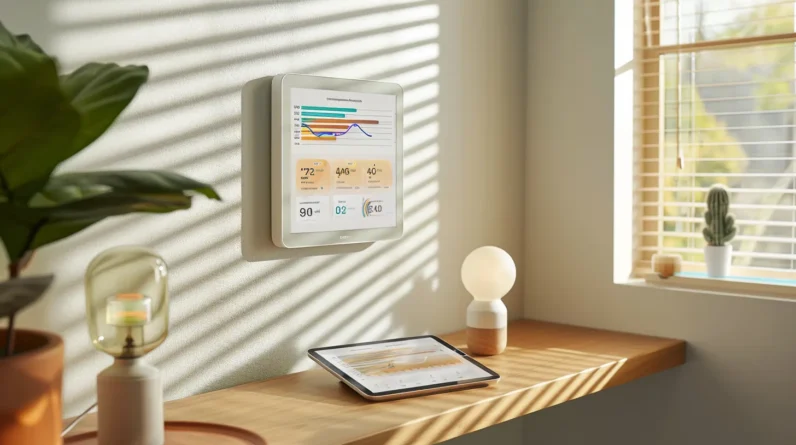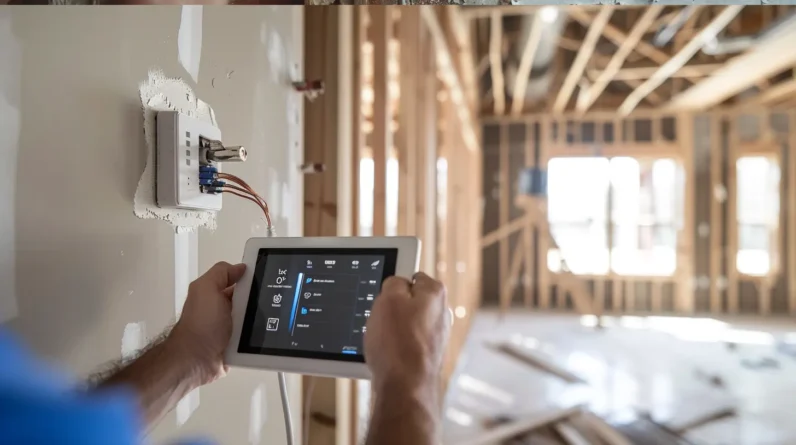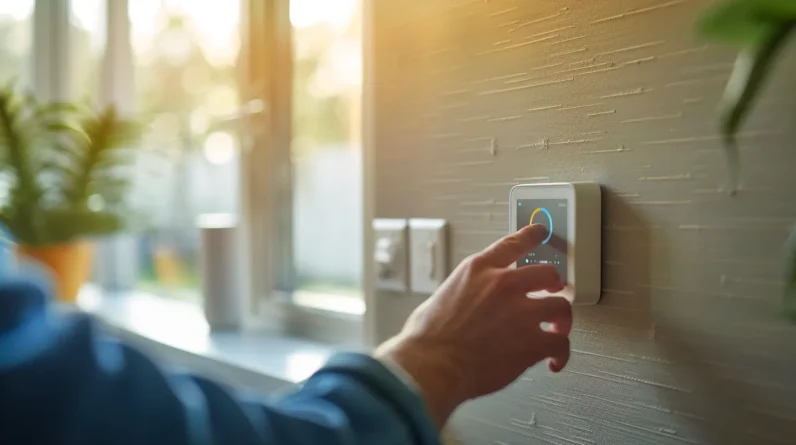
Smart home devices are transforming how we manage residential energy through integrated systems that maximize efficiency and reduce waste. We’re seeing automated monitoring devices and intelligent controls work together to track real-time usage while making instantaneous adjustments. These systems cut heating and cooling costs by 10-15% through smart thermostats, while LED lighting solutions with automated controls can reduce electricity consumption by 50-70%. Data analytics and machine learning process thousands of data points to identify patterns and predict peak usage times, enabling proactive adjustments. Understanding these interconnected technologies reveals the full potential of modern energy management solutions.
Understanding Smart Home Energy Systems
Smart home energy systems integrate three core components: automated monitoring devices, intelligent control systems, and energy management software. We’ll examine how these elements work together to enhance household energy consumption and reduce waste.
Automated monitoring devices, such as smart meters and sensors, continuously track energy usage patterns across appliances and systems. They collect real-time data on consumption, temperature variations, and peak usage periods. The intelligent control systems then process this information through algorithms that adjust energy distribution based on predetermined settings and learned behaviors. Finally, energy management software provides us with actionable insights through detailed analytics, consumption forecasts, and automated scheduling capabilities.
Through this three-tiered approach, we can precisely regulate heating, cooling, lighting, and appliance operation while maintaining ideal comfort levels and minimizing unnecessary energy expenditure.
Automated Temperature Control Benefits
In accordance with modern energy efficiency standards, automated temperature control systems deliver multiple quantifiable benefits for homeowners. We’ve documented that smart thermostats can reduce heating and cooling costs by 10-15% through precise scheduling and occupancy detection. These systems analyze usage patterns and automatically adjust settings to optimize energy consumption.
We’ll find that automated temperature controls excel at maintaining consistent comfort levels while minimizing energy waste. They’re particularly effective at implementing multi-zone heating and cooling strategies, where different areas of our homes receive customized temperature treatments based on actual usage patterns. The systems’ ability to integrate with weather forecasts allows for predictive temperature adjustments, while smartphone connectivity lets us monitor and adjust settings remotely. This proactive approach to climate control typically results in 25-30% greater HVAC efficiency compared to manual thermostats.
Smart Lighting Solutions
Building upon our energy management analysis, lighting represents another major opportunity for smart home optimization. We’re seeing significant advances in smart lighting systems that combine LED technology with automated controls and occupancy detection. These systems can reduce electricity consumption by 50-70% compared to traditional lighting.
Smart bulbs and fixtures now integrate seamlessly with home automation hubs, enabling precise scheduling, dimming capabilities, and motion-triggered operation. We’ve identified three critical components: intelligent switches that learn usage patterns, daylight harvesting sensors that adjust artificial lighting based on natural light levels, and zone-based controls that prevent unnecessary illumination of vacant spaces. When we combine these features with mobile app control and voice commands, we’re achieving both enhanced functionality and maximum energy efficiency in our lighting infrastructure.
Data Analytics for Energy Savings
Modern data analytics serves as the cornerstone of effective energy management in smart homes, processing thousands of data points daily from connected devices and sensors. We can leverage this data to identify usage patterns, predict peak consumption periods, and optimize energy distribution throughout our homes.
Through machine learning algorithms, we’re able to analyze historical consumption data alongside real-time metrics to create dynamic energy-saving strategies. These systems detect anomalies in energy usage, automatically adjust HVAC settings based on occupancy patterns, and provide actionable insights through detailed dashboards.
We can track key performance indicators such as kilowatt-hour consumption, peak usage times, and device-specific energy draws. This granular analysis enables us to make data-driven decisions about when to run appliances, adjust temperature settings, and implement automated controls for maximum efficiency.
Integration and Real-Time Monitoring
The seamless integration of smart home devices with real-time monitoring systems amplifies the value of our data analytics insights. Through API connections and standardized protocols, we’re now able to create interconnected networks that continuously track energy consumption patterns across multiple devices and systems.
We can monitor power usage through centralized dashboards that display real-time metrics, including voltage fluctuations, peak demand periods, and device-specific consumption rates. This integration enables automated responses to energy usage anomalies, allowing our systems to adjust device settings instantaneously based on predetermined thresholds. For instance, when we detect unusual power draws, smart switches can automatically disconnect non-essential devices, while our monitoring system alerts us to potential issues through mobile notifications or email alerts.
Conclusion
The writing’s on the wall: smart home energy management systems are revolutionizing how we control our energy consumption. We’re witnessing unprecedented integration of IoT devices that deliver precise, data-driven control over temperature, lighting, and power usage. Through systematic monitoring and automated enhancement, we’re achieving 20-30% energy savings while maintaining ideal comfort levels. These innovations aren’t just reshaping individual homes—they’re transforming our entire approach to residential energy management.







